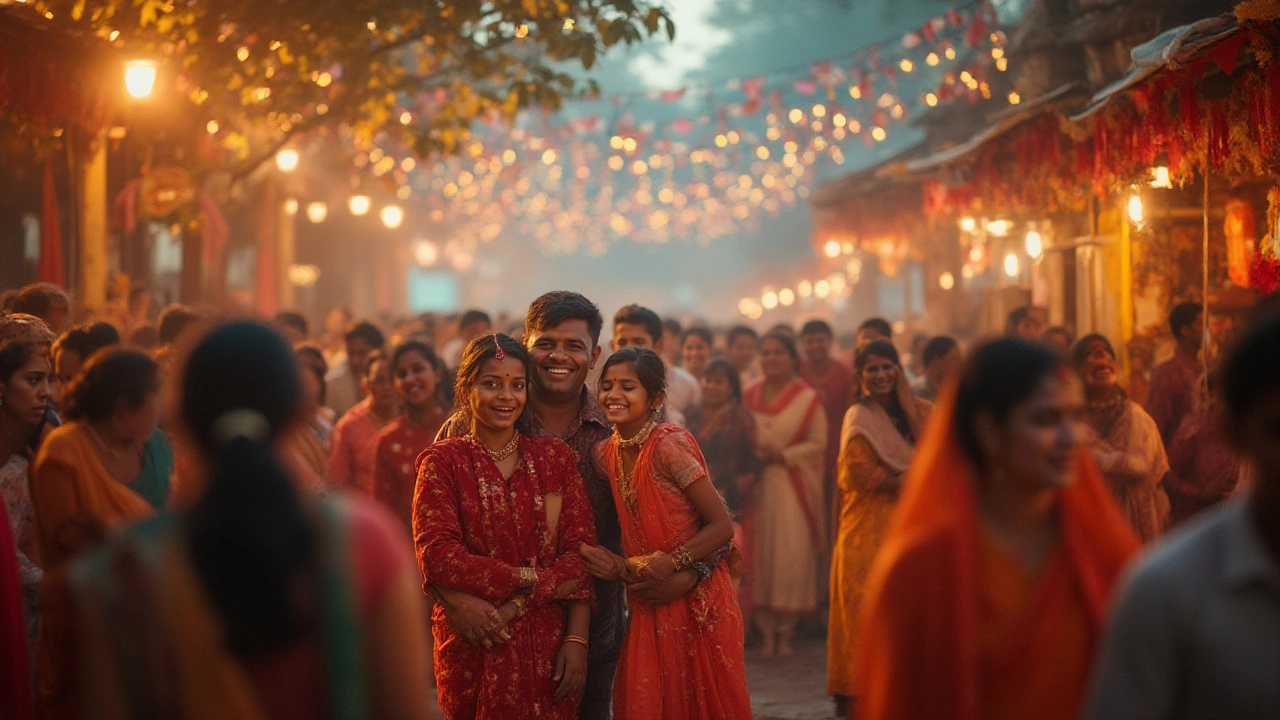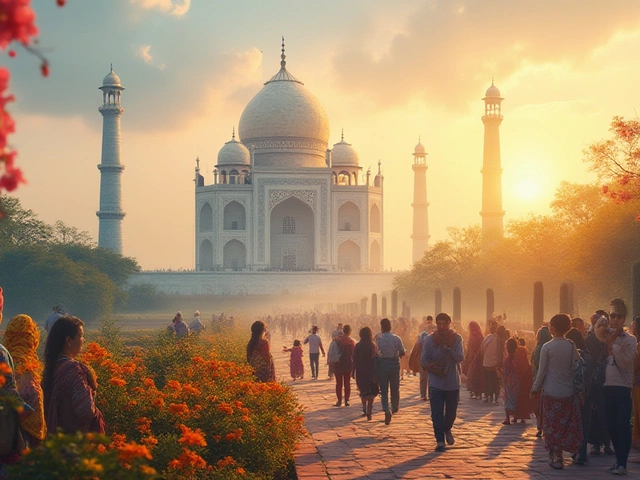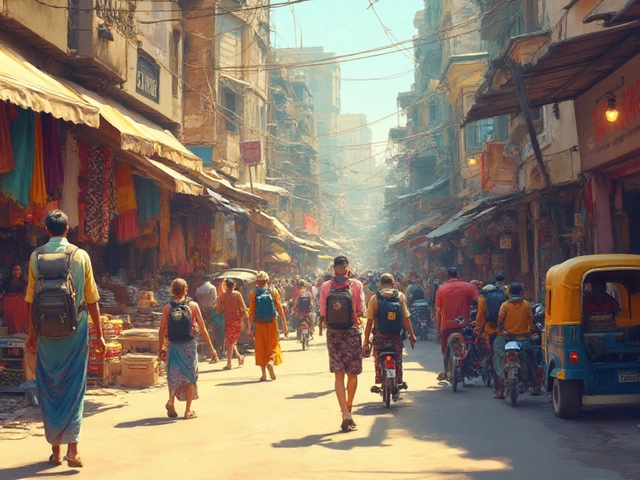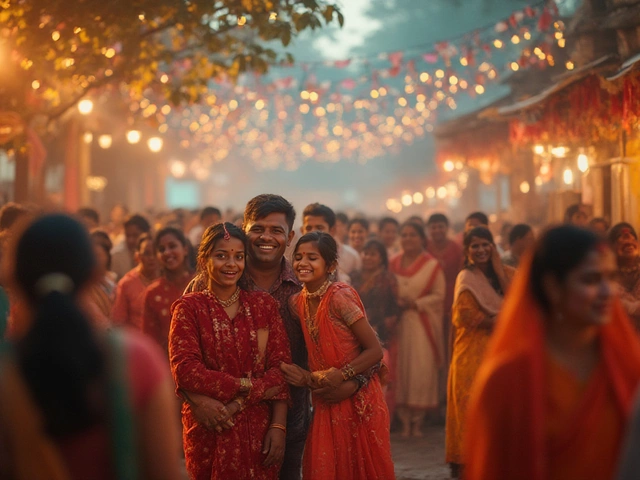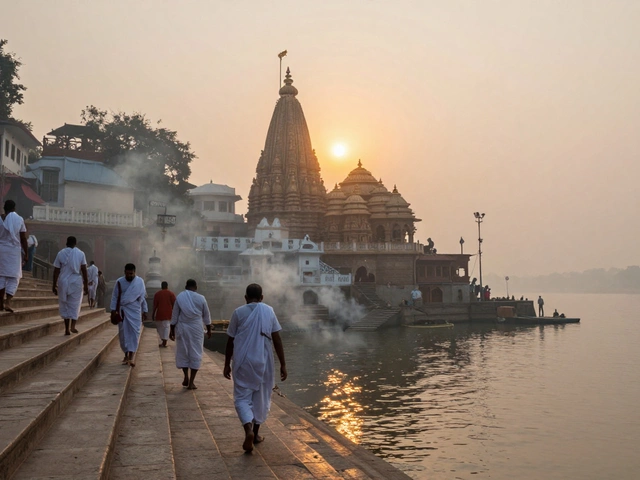Traveling to India isn’t like buying a random train ticket and hoping for the best; this country changes with every flip of the calendar, and the month you pick makes or breaks your trip. The Himalayas dusted with snow in January are a far cry from the sticky, steamy nights in Kolkata come June. It all depends on whether you crave the cool mountain breeze, the flamboyance of Diwali, or that irresistible mango season. So which month lands you right in the sweet spot?
The Weather Guide: Decoding India's Seasons
India has six distinct seasons if you go by local calendars, but let’s keep things practical. The country swings between four big moods: winter (December to February), summer (March to June), the monsoon (June to September), and the post-monsoon stretch (October to November). Each region dances to its own weather, with Delhi’s winters not even coming close to the balmy coastal nights in Goa.
Want to dodge the unforgiving heat? Target the best month to visit India: November through February. Most local travelers and international visitors agree this is when India’s at its friendliest. Temperatures drop to a pleasant 15-25°C (59-77°F) across North and Central India, so you aren’t sweating buckets in cities like Jaipur, Varanasi, or Mumbai. Down south in Kerala or Tamil Nadu, it’s less about escaping the cold but more about tackling the humidity—you’ll score clear skies and gentle breezes, perfect for lounging under palm trees or adventuring into spice plantations. If you’re heading to the Himalayan foothills, think about late March to early May, when rhododendrons bloom and the air still carries that snappy chill.
Here’s a breakdown of what you’ll get monthly:
| Month | Highlights | Weather | Notes |
|---|---|---|---|
| January | Republic Day, pleasant temps | Cool, dry | Best for Rajasthan, Goa, Kerala |
| April | Hot, pre-monsoon festivals | Warm-hot | Hill stations shine |
| August | Southwest monsoon | Wet, humid | Green everywhere, but flooding possible |
| October | Navratri, Durga Puja | Pleasant, drying up | Festivals in Kolkata, Gujarat |
| December | Christmas, New Year | Coolest, dry | Tourist peak |
If you’re visiting the deserts of Rajasthan, skip May and June unless you’re a masochist—the thermometer routinely touches 45°C (113°F). But the monsoon transforms Kerala’s backwaters into hallucinogenic green and brings a relief no air conditioner can offer. The downside—travel disruptions, closed hiking trails, and sometimes unrelenting rain. But the upside? Fewer crowds and off-season discounts across most regions, especially if you don’t mind getting a little wet.
Festival Fever: Syncing Travel with Cultural Chaos
Let’s be honest—the best stories come from that time you stumbled into a Hindu wedding by accident or joined Holi celebrations without realizing your white T-shirt was doomed. India’s festivals run on their own cosmic clocks, some shifting with the moon, others popping up like confetti through the year. You’ll want to match your visit with these, trust me.
October and November serve up a buffet of festivals: Diwali with its five nights of lamps, sweets, and firecrackers, and Durga Puja in Kolkata, where statues of goddesses take over the city. Hog on laddoos, watch fireworks from rooftops, and if in Varanasi, catch Ganga aarti when the ghats shimmer with thousands of diyas. In March, join Holi—India’s wildest smear-fest. Cities like Mathura, Vrindavan, and Jaipur go technicolor. Word to the wise: wear old clothes and invest in a bandana for your hair.
But the calendar is stuffed: Rajasthan’s Pushkar Camel Fair (usually November) is like a desert circus with thousands of camels and even more colors. Over in Kerala, Onam (August–September) delivers snake boat races and banana leaf feasts—just watch out, as monsoon showers might keep you inside. If your soul craves spiritual spectacles, go for Kumbh Mela (last one was in 2024, next in 2027), which attracts millions to bathe in holy rivers.
Here are some big ones to remember:
- Diwali: Late October or early November every year.
- Holi: Usually falls in March.
- Durga Puja: September–October in Bengal.
- Pushkar Fair: November in Rajasthan.
- Onam: August–September in Kerala.
Time it right and these celebrations will sweep you into the madness and joy that’s pure India. Just remember—hotels fill up months in advance during these festivals, and prices spike fast. Book early, be flexible, and don’t be shy about joining in. Locals take pride in including travelers, so dance, eat with your hands, and say yes to everything—except dubious street lassi on Holi.
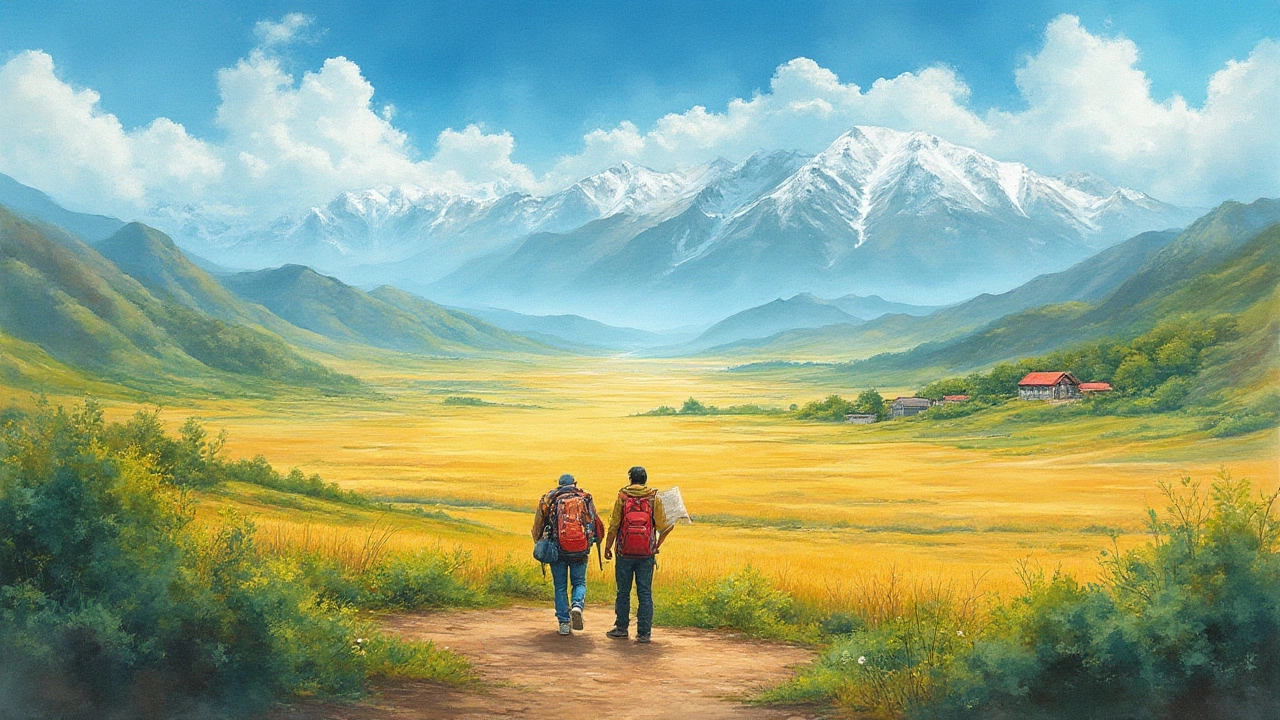
Beyond the Calendar: Special Travel Goals and Hidden Perks
It’s not just weather and festivals that decide India’s best travel month. Some people want wildlife encounters, others the quiet of high-mountain treks, or a wellness retreat with yoga and Ayurveda. Here’s how the months stack up for different dreams.
January to March is safari gold. If you’re dying to spot Bengal tigers, head to parks like Ranthambore, Kanha, or Bandhavgarh while the woods are dry and visibility is high. Early mornings get chilly, but that’s when the animals show up for a drink. For trekking, April and May are the ticket for Himalayan hikes in Uttarakhand, Himachal, or Sikkim—rhodo blossoms and cool air keep things pleasant; most trails unlock by late March.
If you’re on the hunt for bargains and can handle a little rain, shoot for July to September. Monsoon prices for hotels can drop by 20–40% in major cities and beach towns. Goa, though soggy, is a steal and deserted compared to December’s wild beach parties. Ayurvedic resorts in Kerala swear by treatments during monsoon, when humidity supposedly amplifies the healing. Plus, the waterfalls in Maharashtra come alive—think spontaneous misty showers and rainbows.
Here’s what else stands out:
- Skiing (yes, really!): January–February in Gulmarg (Kashmir) or Auli (Uttarakhand) with real snow—not the artificial stuff.
- Desert festivals: February in Jaisalmer, complete with folk music, camel races, and sand art.
- Foodies: Go in spring or autumn. Mangoes peak in June, but street food is relished just before or after heavy rains. Avoid monsoon for the full flavor experience.
- Yoga in Rishikesh: March–April, when ashrams open doors for global seekers and riverside weather is just right.
Bottom line? Know your reason for visiting. A photographer seeking clear landscapes or a birder waiting for elusive species will want different months than a family chasing big festivals and bustling cities. Don’t just copy a friend’s itinerary—India is personal, and timing changes everything.
Practical Tips for Picking Your Perfect Month
Now, time for some real talk. No matter when you pack your bags, India will throw you curveballs: transport strikes, surprise showers, bouts of Delhi belly (it’s not a myth). But with a smart pick of month, you’ll tilt the scales in your favor.
For first-timers, November and February are the gold standard—pleasant temps, little rain, and enough festivals to make things interesting but not overwhelming. Flights and hotels are decently priced if you book early. Crowd levels strike a balance; you can actually get a sunrise view at the Taj Mahal without jostling twenty selfie sticks. For families, avoid the summer (May–June) unless you love theme park-level chaos at attractions and heat so thick it feels like soup.
If you hate big crowds, try early December or late January. Most Indian school exams mean families aren’t on the move, so places like Jaipur and Goa are less packed. For digital nomads, the rainy off-season (July–September) unlocks quieter coworking spaces, cheap home stays, and endless chai breaks soundtracked by thunder. Just bring heavy-duty mosquito repellent.
If you love striking a bargain, watch the hotel rate charts and be ready to pounce during the shoulder seasons (October and March). Booking platforms often offer promo codes around these months. And always double-check which festivals are going on in your target city—some, like Kumbh Mela, can snarl transportation for weeks.
One last tip: India measures distances in time, not kilometers. Whether it’s a 300 km road stretch from Delhi to Jaipur or a 15 km jaunt across Mumbai, travel time can double during certain months because of rain or tourist season. Add buffer days to every plan—the last thing you want is to miss that once-a-year festival because you didn’t budget for traffic or delayed trains.
Whatever your curiosity—food, wildlife, parties, quiet contemplation—India has a month for it. The trick isn’t just picking the right one, it’s coming in with wide-open eyes and a spirit ready for the unexpected. And trust me, it’s always worth the ride.
